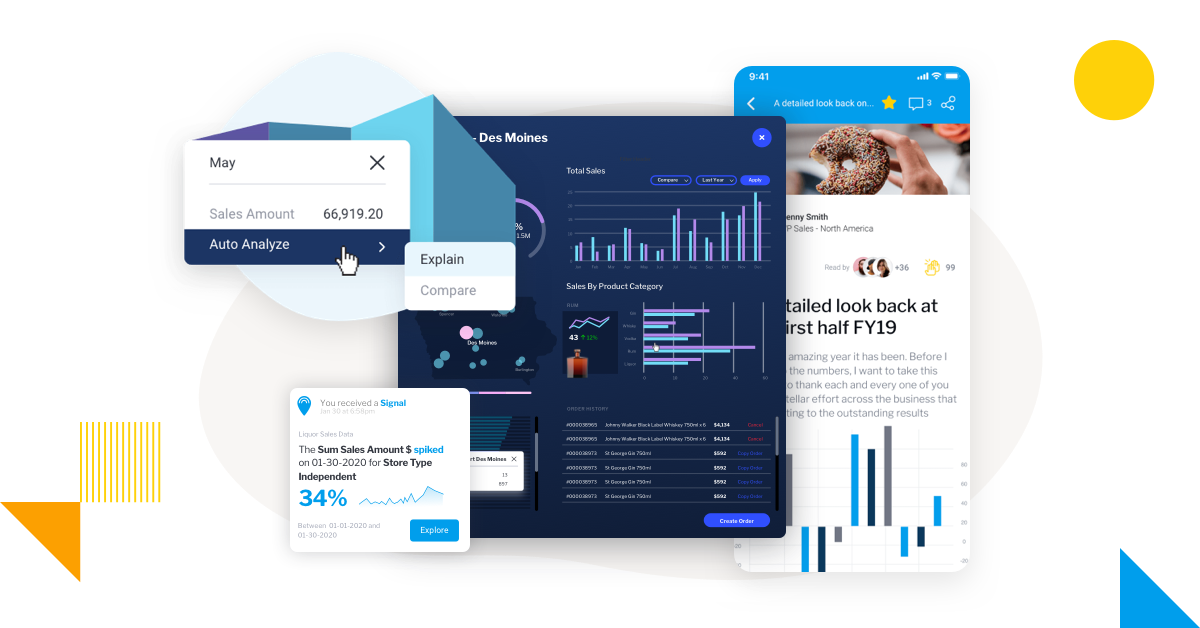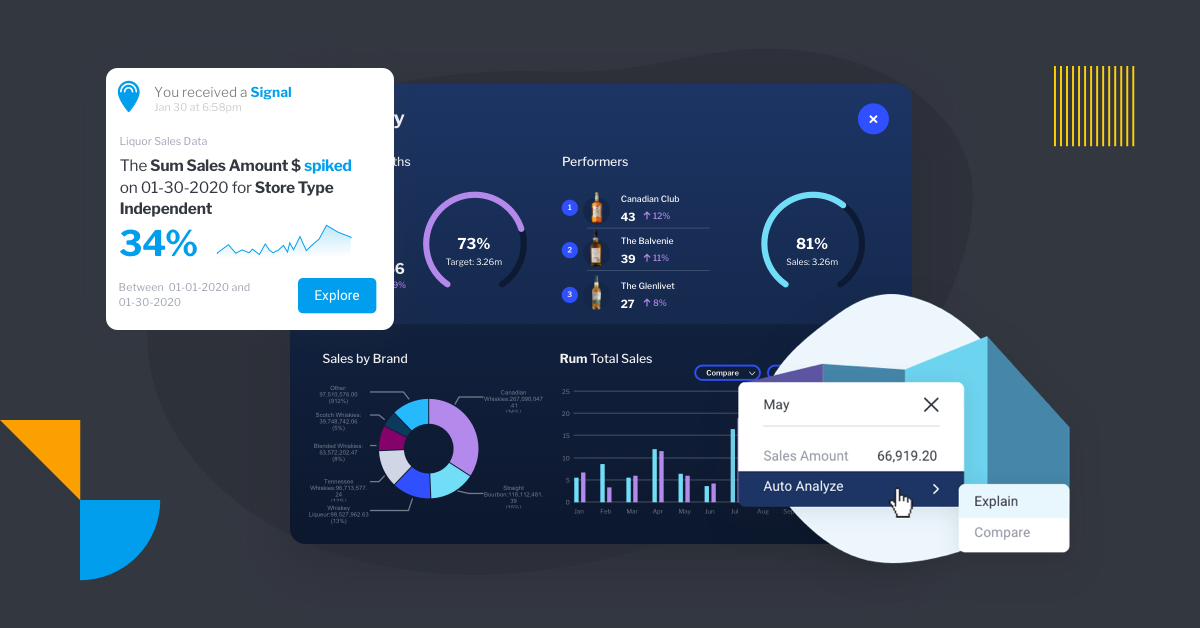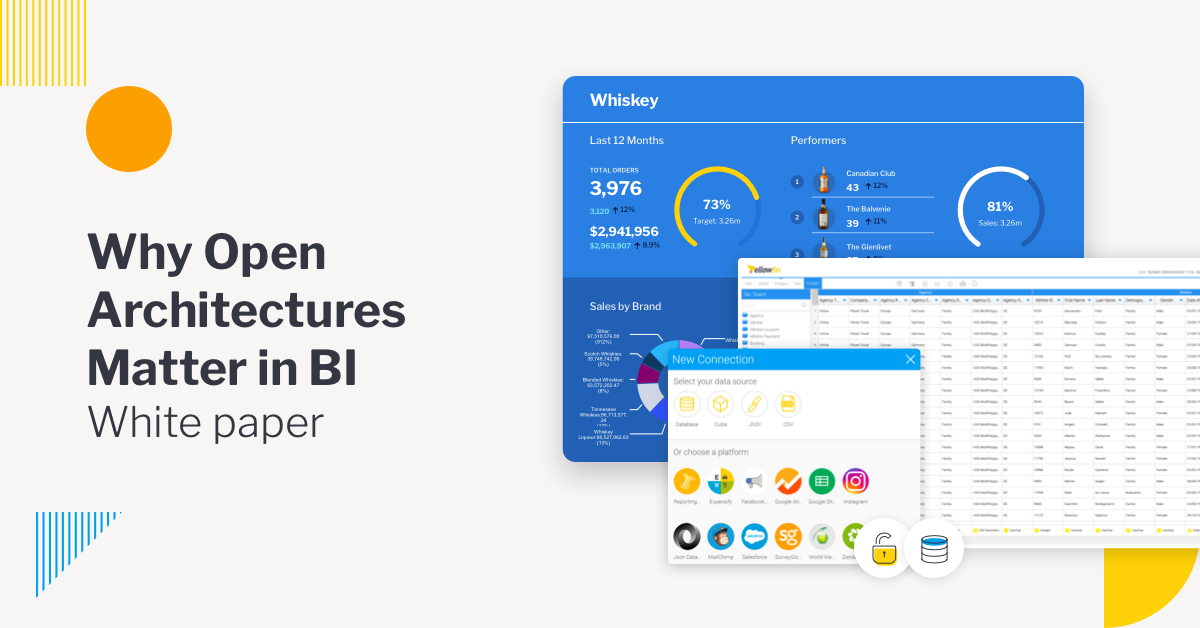After 20 years of dashboards, today’s line-of-business users expect more value from their analytics, and it’s up to your business to keep updated - or risk getting left behind.
There was a time when product teams could purchase basic dashboards and data visualizations, and that was more than enough to satisfy the average user’s business intelligence (BI) and analytics needs. Today, however? Not so much.
From AI-assisted analysis to automated alerts to contexualized insights, there are several new sophisticated analytical capabilities that have become core parts of modern embedded analytics solutions, and many users’ expectations have risen accordingly.
Simply put, basic dashboards, on their own, won’t cut it for long.
What does this mean for software vendors? Simply providing access to data or basic report creation does not automatically mean your application’s analytics is strong, delivering value, or even self-service. The benchmark for analytics has risen dramatically.
You need to provide the value they expect, and that means updating your application’s analytics to keep up with changing demands, and modernization of your capabilities.
3 signs it’s time to update your app's analytics
If your product’s analytics can’t keep up with what your users want today and tomorrow, they will look outside of your product to fulfill their BI needs. Here are some problematic signs your product or company-wide analytics solution investment is due for a refresh:
1. Analytics workload is on your developers: Self-service dashboards and reports are only defined as such if your users don’t need IT assistance to help them build and use them. If your users are consistently requesting reports from your developers, it’s a clear sign the analytics currently offered in your product don’t provide enough functionality for end-users to extract the value they want and the insights they need to make decisions.
2. Increased demand for features: Contextualized insights and machine-explained results once seemed like a far-flung future, but they’re now a reality, and it’s hard not to notice. If your users are constantly hounding your team to match modern features they see elsewhere, it’s better to plan for an update now than risk losing them to other tools.
3. Decreased adoption of analytics: It’s one thing to have analytics components like dashboards and data visualization as part of your application, but it’s another to ensure it actually provides value. If overall user adoption is low, it’s likely your software’s BI feature-set is considered outdated or not useful, and it’s time to rectify that perception.
Whether you originally went the path of homegrown BI built in-house, or embedded an older analytics tool that fulfilled your users’ needs at the time, your product still needs to keep up with the analytic needs of today, and that means exploring your options now.
5 benefits to updating your product's analytics
While we could focus on the negatives - ignoring these signs or delaying an analytics update for too long means you risk potential churn, customer dissatisfaction and reduced win rates - we’d rather focus on pin-pointing five very good reasons why you should update your company or application's analytics (if you haven’t already), and the many value benefits you can deliver to your users by undergoing an upgrade.

#1 - You create competitive advantage in a crowded market
The likes of augmented analytics or contextual analytics or natural language query (NLQ) are far from just fancy features to tick off a list. Offering powerful features like these as part of your product experience reduces your end-users’ need to look to other third-party apps for their BI needs, as the value they can derive from your embedded analytics is now greater than options they may have previously relied on.
Your product will additionally over delight customers by over-delivering. It’s safe to say AI analytics, data storytelling and automated analytics aren’t a part of every analytics package out there, so you effectively increase the chances of your solution to be recognized as best-in-class in the market, creating a stickier user experience and establishing long-term competitive differentiation.
#2 - You can focus your team on improving your product’s core experience
Home-grown analytics has its place, but it also has its limits. If you don’t have the internal expertise to continuously update and iterate on your product’s analytics, you face a lot of money and time spent to fulfill reporting requests and try to build feature parity with dedicated analytics platforms that have years of experience and knowledge in the field.
Opting to buy vs build analytics with an embedded analytics solution means you spend less time worrying about keeping up with competitors and have more time to improve your core product functions. Because modern analytics actively guide your users toward relevant findings and are streamlined to be user-friendly, they reduce the manual process behind exploring complex data, saving both valuable time and effort.
In short, users won’t need to request new reports or IT assistance, your developers don’t get pulled elsewhere, and customer satisfaction with your core experience is increased.
Learn more: Buy or build embedded BI: Which is better?
#3 - You can modernize and future-proof at the same time
We speak to many prospects who are re-architecting their software to move toward a Software as a Service (SaaS) model or migrating to the cloud for future-proofing.
If your business is in this scenario, leading your modernization efforts with an update to your product’s analytics stack can tick several boxes:
- Embedding a proven analytical platform into your product is a quick win that requires minimal effort from your developers, while introducing an immediately noticeable and beneficial user interface and user experience revamp.
- You can provide the capability for more sophisticated analysis of your customer’s data in a SaaS environment, including benchmark and comparative analytics that help your customers know how they compare to their competitors.
- Embedded analytics can be leveraged as an incentive for on-premises users to make the move to the cloud or all-digital workplace, increasing customer migration rates.
In short, combining your move away from outdated architecture with an update to your analytics can bring many benefits - and help make the buy-in for both efforts considerably easier for all.
Related reading: How to modernize your legacy BI tools with embedded analytics
#4 - You unlock new, valuable revenue opportunities
An up-to-date embedded analytics stack provides a major selling point for your sales teams to secure more deals. You’re not just offering the same old dashboards as everyone else, but must-have features that users will want to take advantage of.
As touched on earlier, churn is a real problem for product owners who only offer basic reporting features. Updating your software’s analytics reduces this, as your product will deliver all the analytical value and functions your users previously sought elsewhere.
Lastly, your product team can monetize your new analytical upgrades as value add-ons as part of a larger package, and charge more for access to them. If competitors don’t offer anything similar, it’s easier to sell your offering as having greater value to prospects.
#5 - You provide latest, exceptional analytical experience
Updating your product with an established embedded analytics solution, such as Yellowfin, instantly opens up the best and latest self-service BI technologies to both your developers and users, transforming the way your product is used for the better.
Users will still have dashboards to represent the data they need to monitor key metrics and find fast answers, but powerful new features like automated business monitoring, contextual analytics and data storytelling further enhance these staple BI tools, and allow users to go deeper in their self-service analysis and find actionable insights easier.
The level of sophistication the latest embedded analytics bring ultimately optimizes your customers’ use of your product, and increases the business benefits they derive from it.
Learn more: 5 benefits of modernizing with embedded analytics
Updating your analytics: Next steps
Don't know how well your current analytics fares? The Embedded Analytics Maturity Curve helps you understand the requirements needed to introduce or update embedded analytics effectively, whether it is a new or existing software product.

